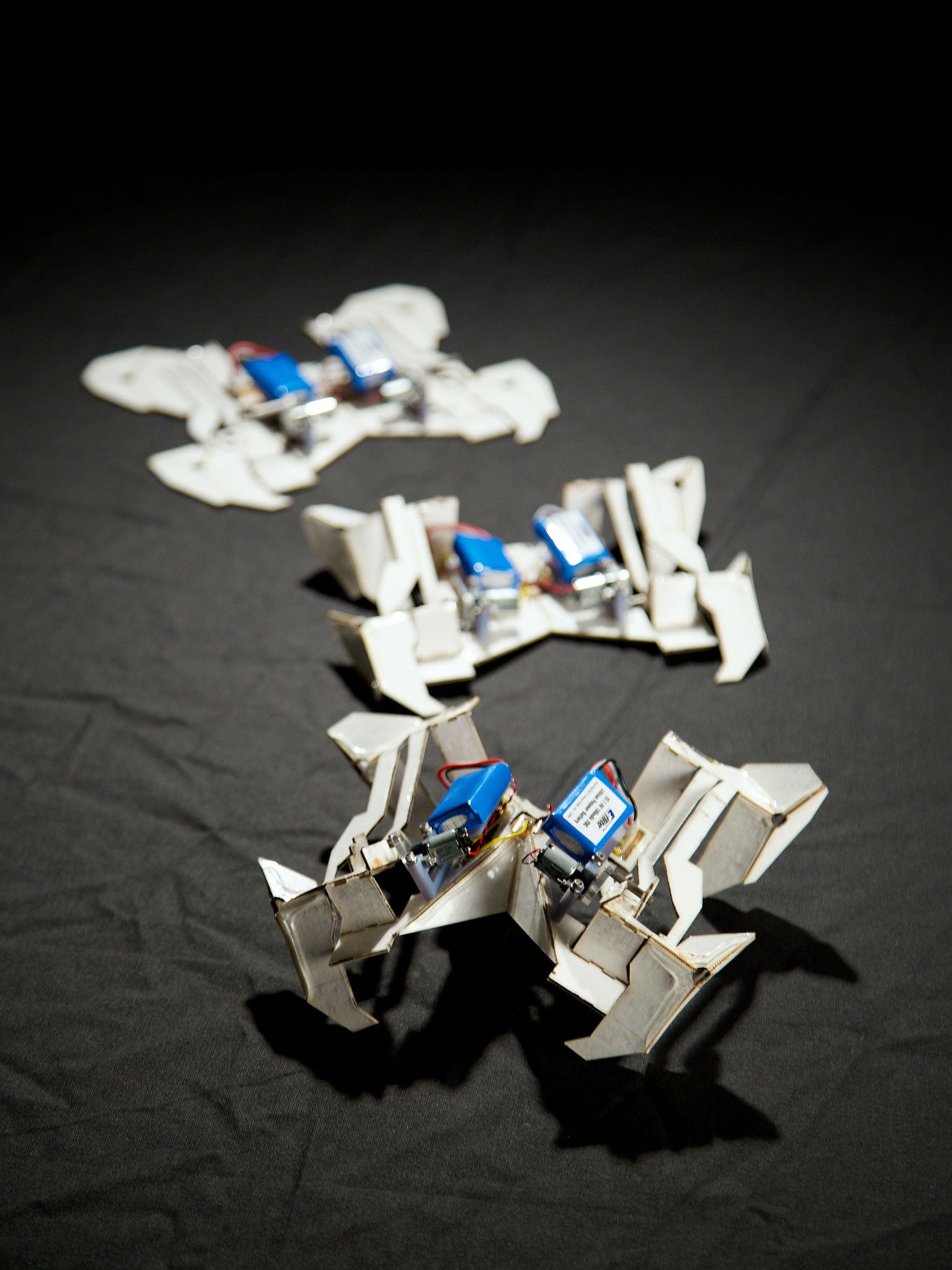Self-folding 'origami' robots could be the future of space exploration or search-and-rescue

Your support helps us to tell the story
From reproductive rights to climate change to Big Tech, The Independent is on the ground when the story is developing. Whether it's investigating the financials of Elon Musk's pro-Trump PAC or producing our latest documentary, 'The A Word', which shines a light on the American women fighting for reproductive rights, we know how important it is to parse out the facts from the messaging.
At such a critical moment in US history, we need reporters on the ground. Your donation allows us to keep sending journalists to speak to both sides of the story.
The Independent is trusted by Americans across the entire political spectrum. And unlike many other quality news outlets, we choose not to lock Americans out of our reporting and analysis with paywalls. We believe quality journalism should be available to everyone, paid for by those who can afford it.
Your support makes all the difference.They sound like real-life transformers – the toys that can change from one shape into another – but these robots are perhaps more akin to the flat-packed world of an Ikea catalogue.
Scientists have taken the idea of self-assembly so seriously they have come up with a self-folding robot that can spring out of a flat surface, create its own legs and spontaneously crawl away – something that no Ikea table has yet done.
The crawling robot is the first machine to assemble itself and to carry out a function without any outside assistance according to the researchers, who took inspiration from origami, the Japanese art-form of paper folding, to achieve their breakthrough.
Although still at the prototype stage, self-assembled robots could one day be used to explore confined spaces, such as collapsed buildings, or be sent into space as a set of flat-packed sheets that can fold themselves on command into a small army of robotic space probes.
“We demonstrated this process by building a robot that folds itself and walks away without human assistance,” said Sam Felton of Harvard University, one of the researchers who designed the self-folding robots.
“Imagine a ream of dozens of robotic satellites sandwiched together so that they could be sent up to space and then assemble themselves remotely once they get there. They could take images, collect data and more,” Mr Felton said.
The pioneering feat of robotic engineering, detailed in the journal Science, was made possible by laser-cutters that etched folding “hinges” into a flat, two-dimensional surface built from five composite layers of stiff paper-like material.
The scientists adopted the same technology used in “Shrinky Dinks”, the toys that shrink into shape when heated, to make hinges that fold when heated by embedded electric filaments powered by battery.
In just four minutes, the flat surface of etched electrical circuitry can be powered up into a 3D functional machine with four legs that can crawl away at a speed of about two inches per second.
“Folding allows you to avoid the ‘nuts and bolts’ assembly approaches typically used for robots or other complex electromechanical devices, and it allows you to integrate components such as electronics, sensors and actuators, while flat,” said Professor Robert Wood of Harvard.
“I believe there is a tremendous potential to use these methods to build machines for situations where you need deployability, such as in space exploration or in search-and rescue missions in hazardous environments,” Professor Wood said.
“I also believe you can use this method to make machines cheaper, by cutting assembly costs and [developing] more rapid prototypes,” he said.
The scientists said they took many of the ideas from origami, the ancient Japanese art of paper folding, to design a flat surface that would spontaneously evolve into the required three-dimensional shape when instructed.
Each “hinge” in the flat surface contained embedded circuits that produce heat on the command of an on-board microcomputer. The hinges folded in a specific sequence to make sure they ended up with the final, desired shape of the crawling robot.
“We created a full electromechanical system that was embedded into one flat sheet. There is a great deal that we can improve based on this foundational step,” Mr Felton said.
One of the great benefits of the self-assembly approach is to mass-produce robotic products that would be far cheaper than existing machines made from 3D components, he said.
“Traditional manufacturing requires expensive machinery, and 3D printing is too slow for mass production, but planar composites can be rapidly built with inexpensive tools like laser cutters and etch tanks and then folding into functional machines,” Mr Felton said.
“Such manufacturing methods would be idea for producing 100 to 1,000 units. These robots are inexpensive and their layered composites can be built faster than equivalent 3D printed structures,” he said.
Join our commenting forum
Join thought-provoking conversations, follow other Independent readers and see their replies
Comments